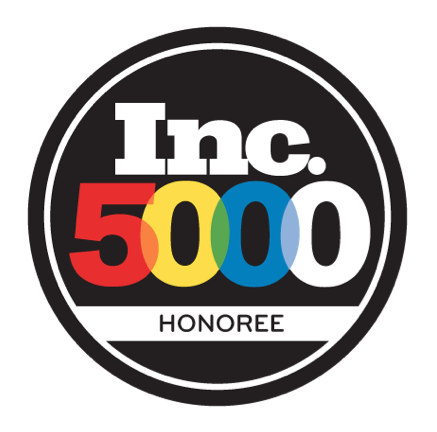You’ve finally figured it out. You know (with at least ballpark specificity) what you want your next job to look like, feel like, be like. This is a great start. And to make it even better, you’ve updated your resume and gotten it all ready to tailor as-needed.
Now, what are you supposed to do with your LinkedIn profile?
Chances are, you’re going to want to make a few quick updates to ensure your profile showcases you as a clear and obvious match for the type of roles you’re now eyeing. Wondering when the heck you’ll squeeze that into your busy, demanding life? Fear not, you can make substantial progress in just 30 minutes.
Minutes 1 Through 15: Edit (or Create) Your Summary So it Aligns With Your Target Audience
If you don’t have a LinkedIn summary at all, you need one. Some recruiters are moving so quickly through profiles that, if you fail to grab their eyeballs with a solid summary, they’re not reading further. And, if you have one, but it doesn’t introduce you as a talented [insert job you want next], you should make some quick adjustments.
Most important is to spell out your strengths and experiences that align with the core deliverables of the types of jobs you’re pursuing. How can you tell which ones are most important? Grab three to four job descriptions that seem super interesting to you. Line them up next to one another and figure out what the most common requirements are (Hint: they’ll probably appear in at least two of those job descriptions).
Do they all call for the ability to lead cross-functional teams, juggle multiple priorities at once, or present complex data to senior leaders? Then write and edit the summary in a way that presents your strengths in these very things (Don’t lie, though. I know I don’t need to tell you this.)
Try to embed several of the most common key terms in that summary also, without making it an obnoxious read for the humans. You want to find the balance between keyword stuffing and an engaging read for your audience. And if you’re struggling on that front, these five LinkedIn summary templates oughta do the trick.
Minutes 15 Through 20: Change Your Headline
You might not even know that you can alter the headline that appears under your name on your LinkedIn profile. But you can, and you should.
If you do nothing with your headline, LinkedIn will always default yours to read as follows: “Current Title at Name of Current Employer.” However, you have 120 characters available to you to make the headline anything you want.
What you want to do is try and make it both algorithmically strong (LinkedIn weights the headline fairly heavily in terms of SEO) and a compelling read to the human reviewer. How do you do that?
Here’s an example: Say you’re a marketing professional with a specific desire to work as a content strategist in your next role. You will want to, then, consider changing your headline like this:
Before: Marketing Associate at XYZ Company
After: Marketing Associate | Content Strategist | Copywriter | I help companies build brands, engage audiences & drive revenue
Minutes 20 Through 25: Update and Rearrange Your Skills
Let’s head back to the three to four job descriptions that you just reviewed. What are the most common skills and qualifications that each is calling for? Do you have experience in these things? Assuming yes, make sure that they’re not only included in the skills and endorsements section of your profile, but appearing high up on the list. LinkedIn will always default the order in which your skills appear as “most endorsements to least endorsements,” but you can drag and drop them into any order you want while in edit mode.
Put the most common and vital ones near the top. Conversely, if you have any skills showcased that don’t really make sense given the role you’re now pursuing, you most certainly can delete irrelevant skills. LinkedIn allows up to 50. While you don’t necessarily need to flood the profile with all 50, use this section to your full advantage so that your profile is rich in the terms more important to your next role or future industry.
Minutes 25 Through 30: Spell Check and Proofread the Entire Profile
LinkedIn doesn’t make spell check a breeze, but you absolutely have to check your profile. Pristine spelling matters, a lot. I often copy and paste entire profile sections into a Word document and run spell check there. For me, this is the most simple and thorough way to make sure I’ve got it right.
However, it’s not just spelling that’ll make you look bad. You should also make sure to proofread for any other mistakes that’ll distract hiring managers. Whatever means you use, make sure you do this. These simple errors will sour even the most brilliant, well-crafted profile.
Wait—Before You Get Started
If you’re a covert job seeker, you need to use care when making even quick changes to your LinkedIn profile. Why? Because most of us have at least a few connections who are current colleagues, clients, or bosses. If these people see alerts in their own LinkedIn news feeds that you’re making a bunch of changes on your LinkedIn profile (e.g. “Kelly Smith updated her Experience” or “Kelly Smith added a Summary”), they may wonder what you’re up to. Before you get moving on your edits, make sure you turn your activity broadcasts off. This will prevent most alerts from going out to your network.
Need to know where that is? Hover over the tiny avatar of yourself in the top right of the screen. From the drop-down menu, choose Privacy & Settings, then Privacy Controls, and then Turn On/Off your activity broadcasts.
Once on that screen, uncheck the box, and begin your 30-minute power session.
If you’re going to take a run at a new job or, at the very least, if you want recruiters or hiring managers to find you for the types of roles you’d love, make sure your LinkedIn lines up. Thirty minutes optimizing your LinkedIn profile to angle you toward the jobs you’d like to land will likely be a half-hour incredibly well-spent.
Oh, and if you find yourself working through this really fast: Take a few extra minutes to make your profile more visually appealing by adding relevant media, uploading a background photo, and making sure that you’re using the best possible headshot.
If you’re interested viewing this original post click here:








